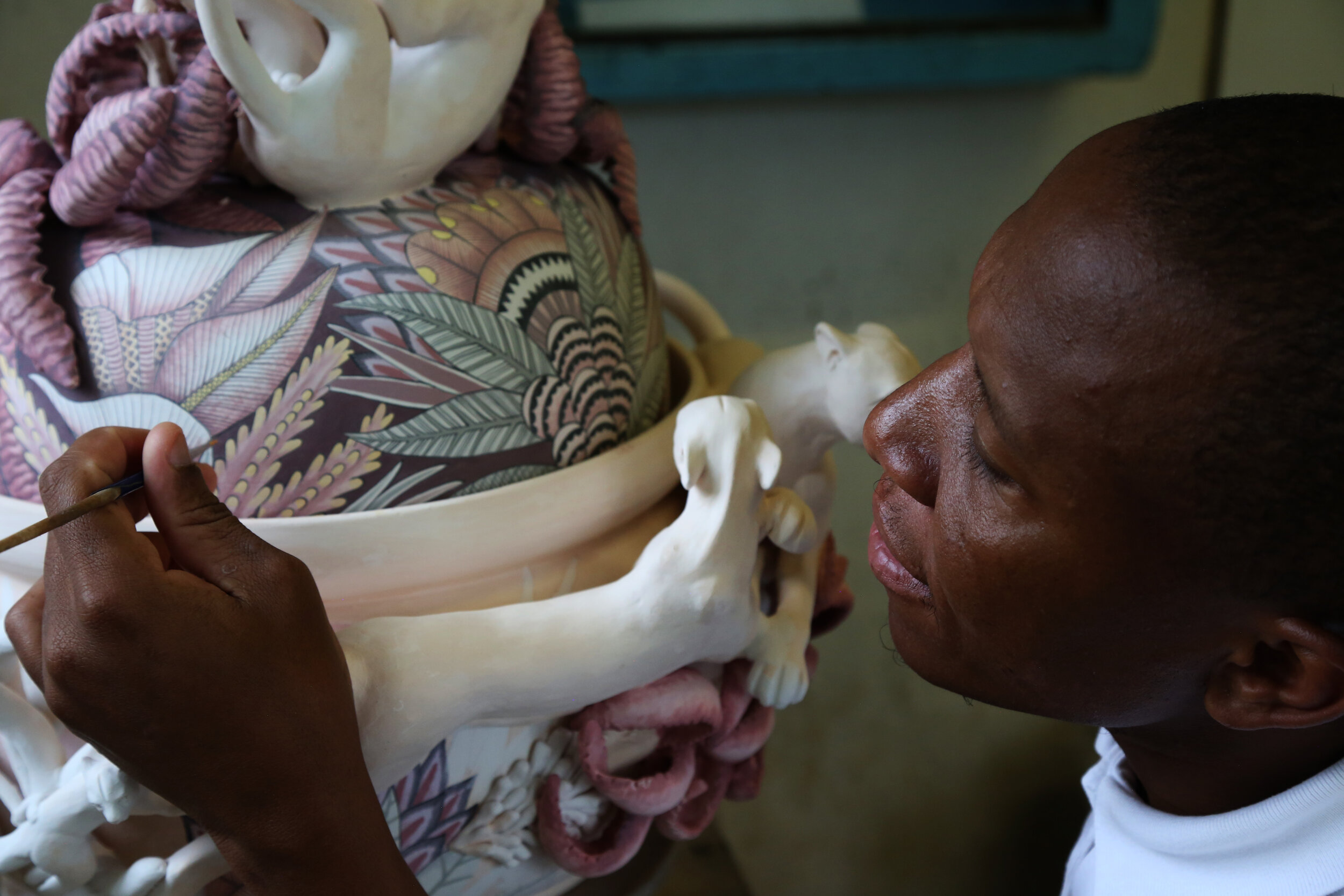The Origin of Our Ceramic Art
Colourful, imaginative, vibrant, delicate and dramatic - these are just some of the common adjectives that describe Ardmore Ceramic Art from rural Kwa-Zulu Natal. Ardmore is South Africa’s most successful ceramics studio, set in the historical Midlands, creating exquisitely handcrafted and highly detailed figurative works and functional wares, made by more than seventy artists who draw on Zulu traditions and folklore, history and the natural world under the mentorship of its founder, Fée Halsted.
I have always enjoyed trips into the Midlands from my hometown, Durban, and have many happy memories of our time spent there. Lazy lunches in beautiful countryside surroundings, stopping off at the many art and craft shops along the way.
Collection No. 1 - Ardmore Ceramics and Design
Ardmore is a thriving artist community creating unique ceramics in the KwaZulu-Natal Midlands of South Africa. The studio was founded by Fée Halsted in 1985 when she moved to a remote farm in the foothills of the Drakensberg Mountains and began teaching local people how to model and paint pottery. Originally Fée worked with Bonnie Ntshalintshali, the daughter of the farm’s housekeeper. They quickly developed a creative synergy and their collaboration drew national attention when they won the prestigious Standard Bank Young Artist award in 1990. Soon Bonnie’s family and friends were drawn to Ardmore to learn from Fée and earn a living creating ceramic art. Wonderboy Nxumalo was another of Ardmore’s exceptional artists in the early years. His unique style, combining drawings with his writing, was often inspired by the joys of love and the sorrows of HIV-AIDS to which he and Bonnie tragically succumbed.
There are now more than 60 Zulu and Zimbabwean artists working in collaboration at Ardmore under Fee’s guidance. Two or three artists are involved in each piece, which is individually thrown on the potter’s wheel, modeled and hand-painted. Each piece is unique and masterpieces can take several months to complete. Energetic movement, intricate detailing and vibrant color defines the Ardmore aesthetic. Safari animals burst with life from luxuriant foliage to form quirky vases, candlesticks, tureens and teapots. There are also exciting forms of sculptural art based on Zulu folklore and tribal traditions. The sale of these wonderful works uplifts and supports the Ardmore community and their families as the artists are paid per piece and have a guaranteed market for their endeavors.
Since 2010, the fantasy world of Ardmore has been translated into a range of fabric designs, which have been made into tablecloths, napkins and runners. Stylish ladies’ handbags featuring the flora and fauna of Africa have been followed by sophisticated silk scarves by Hermès, the luxury French design house. The ideas of a new generation are now making an impact at Ardmore with Fee’s children Jonathan, Catherine and Megan Berning working with young sculptors and painters, including children of the original Ardmore artists.
Ardmore ceramic art is often given as state gifts to visiting leaders and luminaries to South Africa. Queen Elizabeth II was presented with an Ardmore bowl by the President of South Africa and there is an Ardmore masterpiece in the White House. Collectors have been seduced by the wit and whimsy of Ardmore designs and they particularly value the fact that each piece is unique. Christie’s auction house has acknowledged Ardmore artworks as “modern day collectibles”. Exhibitions of Ardmore are held in art galleries around the world and represented in public collections, such as the Museum of Art & Design in New York and the Museum of Cultures in Basel.


